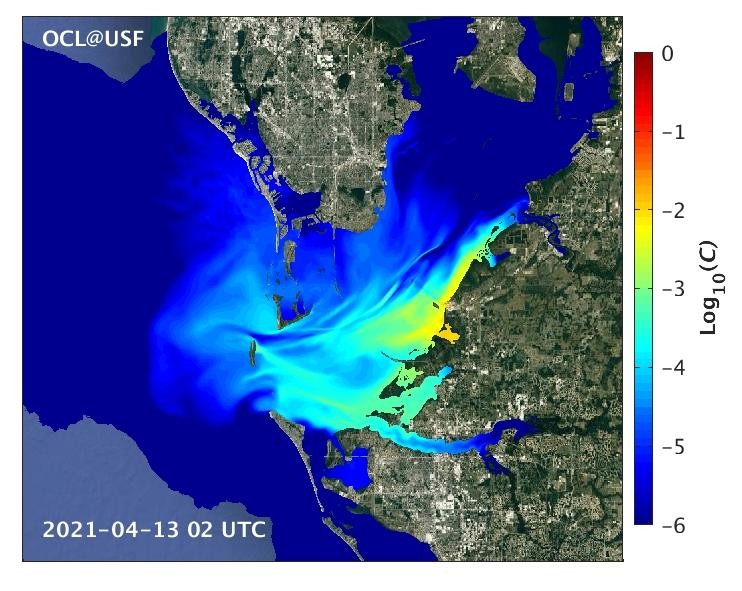USF Models Track Effluent After Piney Point Pumping
Todays News
SRQ DAILY FRESHLY SQUEEZED CONTENT EVERY MORNING
THURSDAY APR 15, 2021 |
BY JACOB OGLES
Image courtesy USF.
A computer model used to track red tide blooms will be employed to measure the environmental risk following a massive release of industrial wastewater from the Piney Point site into Tampa Bay.
The University of South Florida announced it will use two models developed through USF’s College of Marine Sciences to fully understand the impact of contaminants on the water body. USF researcher Bob Weisberg said through the use of sampling and careful forecasts for the dispersal of effluent water, the model can help predict where and when the nutrient-rich releases will have an impact on ecology.
“We’ve got a terrific team on this 24/7 and are committed to ensuring our science helps inform effective action to safeguard Tampa Bay and the Gulf of Mexico,” he said.
Tampa Bay Coastal Ocean Model has been in use to forecast Tampa Bay waters’ response to weather events, and was originally used to simulate response to Hurricane Irma. The West Florida Coastal Ocean Model, meanwhile, is used to track red tides based on the currents driven by winds, tides and deeper ocean forces. The models have now been adapted specifically to understand the water movement around Piney Point in Manatee County.
The work comes about a week and a half after a breach at a Piney Point water reservoir caused the evacuation of more than 300 homes and the emergency release of excess water from the site. Gov. Ron DeSantis declared a state of emergency on April 3. The Department of Environmental Protection and Army Corps of Engineers pumped more than 200 million gallons from a water stack on site into Port Manatee, a move necessary in order to reduce pressure on the breach so it could be repaired without risking a full collapse.
The water stacks date back to when a phosphate mine operated, but that worked stopped in the early 2000s. Current property owner HRK Holdings notified the county of the risk of a breach just shortly before one occurred. State officials have committed to hold the company financially accountable.
State officials stressed that much of the water dumped into the port in fact originated there, dating back to a dredging project. But the water does have high concentrations of phosphorus and nitrogen, bringing the risk of harmful algal blooms.
“We are starting to put together the pieces of the story,” said Tom Frazer, dean of the USF College of Marine Science, “and are grateful for all of the efforts on the part of our state and academic partners in this all-hands-on-deck effort.”
The models can be viewed online here.
Image courtesy USF.
« View The Thursday Apr 15, 2021 SRQ Daily Edition
« Back To SRQ Daily Archive









